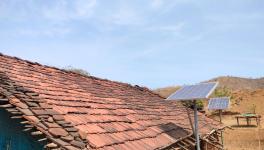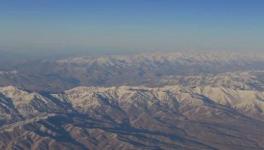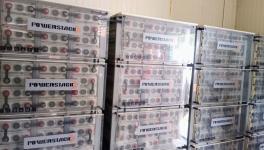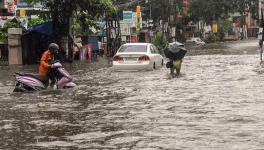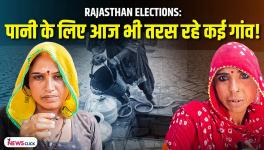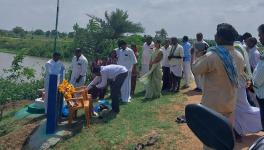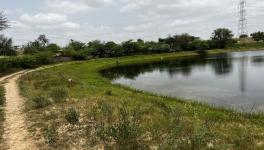Solar Pumps Are Still Pumps, Pose Risk to Groundwater
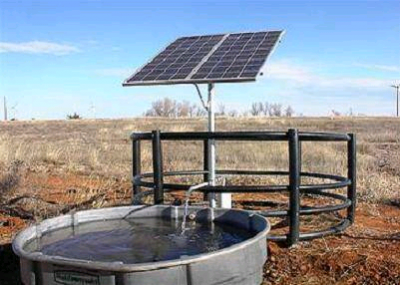
Buldhana (Maharashtra): As a large part of India reels under floods this monsoon, there might seem little reason to dwell on groundwater depletion. Yet, government policy might be putting the already over-used groundwater at greater risk. In 2012, United Nations Educational, Scientific and Cultural Organisation (UNESCO) World Water Development Report showed that India is the world’s largest extractor of groundwater. Over 60% of all irrigation water is groundwater, and a bulk of domestic water used in urban and rural areas is also sourced from groundwater. With the union government now giving a huge push to the use of solar pumps for extracting groundwater for irrigation, the problem of depletion gets further compounded.
The loss of groundwater could also set off a string of changes which have not been completely understood so far. A 2016 paper in the Science Advances journal by Surendra Adhikari and Erik Ivins of NASA’s Jet Propulsion Laboratory in California showed that movement of water was likely behind the Earth’s wobbles as it rotated on its axis. The Earth’s spin axis took an abrupt turn to the east around the year 2000; and it now continues to drift at a pace much faster than before. The researchers said massive shifts in water – and mass – were likely causing the wobbling and shift of axis.
In a report titled ‘Silver Bullet’ (which literally means a seemingly magical solution to a convoluted problem), the Centre for Science and Environment (CSE) offers data which indicates that the Government of India must take a pause in its advocacy of solar pumps for irrigation. Speaking at the release function of this report in Aurangabad, Maharashtra, deputy director general of CSE Chandra Bhushan explained that whatever the source of energy, ultimately this was a pump scheme.
Also read: Root Cause of Agrarian Crisis Lies in Economics, Not Technology: MS Swaminathan
The Centre’s recently unveiled Pradhan Mantri Kisan Urja Suraksha Evum Utthan Mahaabhiyan (PM KUSUM) sets a target of 1.75 million off-grid solar pumps and one million on-grid ones; it also sets out to install 10 GW of small solar power plants. The Maharashtra government alone has set itself a target of one lakh solar pumps, and offers farmers 95% subsidy.
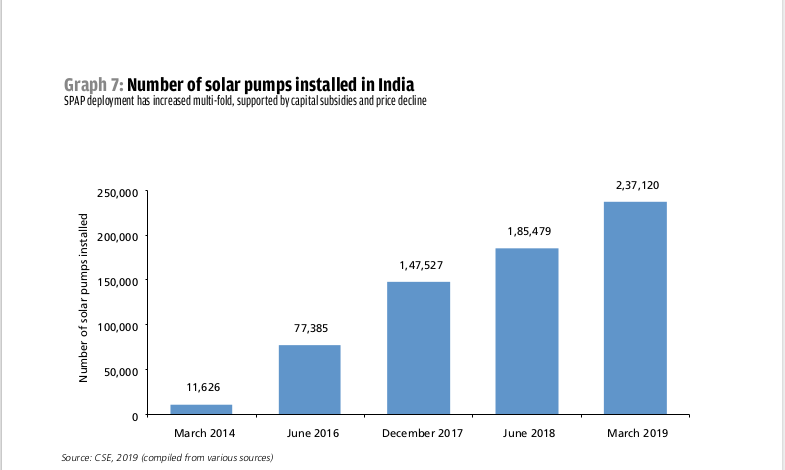
Even paying the 5% that needs to be paid for the installation of the pumps, though, is tough for a small farmer. In Jalgaon village, Jamod taluka of Buldana district, farmer Daulat Niruttiwag said he had to shell out Rs 34,000 for his pump. “We get to water our crops in the daytime. Earlier, we were dependent on the electric pump and electricity supply would often be at night. So water wastage is less now, and when there is water in our well, we can pump when we please.” The village has nearly 50 such pumps. Another farmer, 62-year-old Dattatreya Balaji Dikote, said there are scorpions and snakes in the village, and it is good that now irrigation can happen in the day without great risk of encountering them. However, the deeper the groundwater sinks, the higher the horsepower of the pump required, and more expensive the pumping of water will become.
Given that electricity supply even to the homes in the area was erratic and of poor voltage, one young farmer wondered if it was not possible for the solar panels to be used also for domestic purposes like charging cell phones. Farmers also complained that solar panels have to face the sun, and turning them towards the sun sometimes caused the bearings to go kaput. Besides, when there are repairs to be undertaken on these, there is little local expertise in repairing them. There are also langurs in the village that sit on the solar panels, causing damage that is hard to mend, some farmers said.
This village falls in the water-starved Vidarbha region of the state, the union ministry of water resources in 2013 found localised nitrate contamination in groundwater here. Villagers in Jalgaon, Buldhana said having the technology to pump up the water would not suffice, if there was no water to pump up in the first place.
Also read: Amid Declining Groundwater and Mismanagement, Who’s Really Responsible for Water Scarcity?
The CSE report cites farmers from Hauda village in Nadura block of the district, who have rejected the solar pumps saying they would serve no purpose when there was no water. “Solar pumps can reduce the cost of irrigation for farmers and the government’s electricity subsidy burden; however, it isn’t offering a solution to the more serious problem of water scarcity. In fact, it can exacerbate the problem,” the CSE report finds.
Speakers at the meeting in Aurangabad to launch the CSE report commented on the paradox of government claims of 100% electrification, and the proliferation of off-grid solar pumps. Abhishek Jain of the Council on Energy, Environment and Water said it would be wasteful to attempt to get the surplus power generated by the solar panels attached to the pumps back into the grid – it would be far more economical to attempt to use it locally, for the addition of value to agricultural produce, he said.
The CSE report pointed to flaws in beneficiary targeting in the distribution of solar pumps. In UP, for instance, the state nodal agency distributes pumps on the basis of submission of a demand draft worth the entire upfront cost. Small and marginal farmers find it hard to make the payment. Instead of buying large pumps, some big farmers appear to be going for multiple small pumps to avail higher subsidies. One single family in Bhaisaha village of Pilibhit district, for instance, had five solar pumps in the names of different members of the family! Quite apart from sucking the Earth dry of water, the scheme thus has potential to drastically increase income inequalities among farmers, the report finds.
Also read: India Facing "Extremely High" Water Stress: Report
Get the latest reports & analysis with people's perspective on Protests, movements & deep analytical videos, discussions of the current affairs in your Telegram app. Subscribe to NewsClick's Telegram channel & get Real-Time updates on stories, as they get published on our website.











